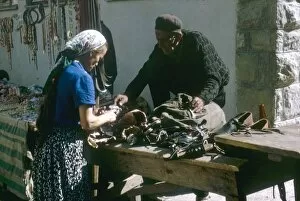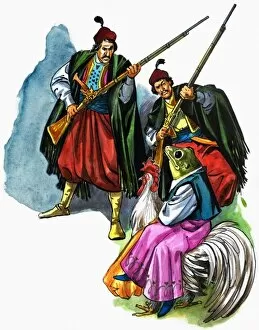Yugoslavia Collection (page 21)
"Yugoslavia: A Tapestry of History, Culture, and Resilience" Step into the captivating world as we embark on a journey through its diverse tapestry of history, culture
All Professionally Made to Order for Quick Shipping
"Yugoslavia: A Tapestry of History, Culture, and Resilience" Step into the captivating world as we embark on a journey through its diverse tapestry of history, culture, and resilience. From the iconic England v. Rest of the World International Soccer match at Wembley to the ancient Map of the Dacian Empire and Roman provinces, this land has witnessed countless tales unfold. In Belgrade's vibrant streets, echoes from the past resound during Sokol Rally - an event that unites adrenaline-fueled enthusiasts in celebration. Just like Yanitza, The Albanian Joan of Arc depicted in Le Petit Journal, Yugoslavians have always displayed unwavering courage and determination. The Tatler cover featuring Duchess of Kent and her sisters encapsulates elegance intertwined with royal lineage. Meanwhile, a street scene in Doboj reveals everyday life in northern Bosnia and Herzegovina - a testament to the resilience ingrained within every Yugoslavian heart. Gaze upon G. H. Davis' intricate map showcasing Yugoslavia's geographical splendor; it is a reminder that this nation was bound by both natural beauty and shared aspirations for unity. H. R. H Princess Paul graces another Tatler front-cover - an embodiment of grace amidst turbulent times. Witness Dubrovnik's reconstruction after adversity struck Croatia; it stands tall as a symbol of hope rising from ruins. Market Day captures bustling scenes where locals embrace their heritage through vibrant exchanges while JAT Yugoslav Airlines poster invites you to explore beyond borders. Finally, we mourned together at the passing of Josip Broz Tito - a visionary statesman who shaped Yugoslavia's destiny with his leadership. Yugoslavia may no longer exist as one entity today but its legacy lives on through these snapshots woven together by threads that transcend time. It serves as a reminder that even amidst challenges faced by nations or individuals alike – strength lies within embracing diversity while cherishing the shared bonds that unite us all.














































